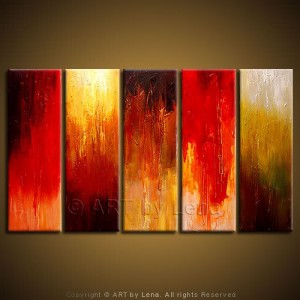Explaining Abstract Art
When one considers the art world prior to the 19th and 20th centuries, a vast majority of it was concerned with depicting Christian or wealthy figures. Some of this art depicts cultural events, like wars or riots, but this depiction is what an abstract artist might call “the logic of perspective.”
Abstract art dismisses these illusions of reality and attempts to find means of communicating an experience through shapes and less structured ideas. This need to express concepts that are difficult to quantify coincided with revolutions in scientific thought, as man sought to quantify what had been previously out of reach.
Abstraction, in many ways, is the departure from reality. Abstraction is a free form of expression, so it’s difficult to consider abstract work in terms of what is good or bad. Abstraction can use shapes and lines that make the viewer uncomfortable, while relying on colors that prove provocative.
Abstraction is also not limited to any one form. Most people would consider either geometric or figure abstraction when they hear the term “abstract art”, but nonobjective and nonfigurative art are equally as important. In the case of Kandinsky, his work evolved over time to encompass many of these accepted forms of abstraction.
Abstraction is also difficult to trace as a historical movement. There was a clearly defined period in the 19th century in which abstract art seemed to come as a statement against the traditional, but geometric line work has been the focus of pottery and architecture for centuries prior. Even calligraphy, such as in Asian languages, can be enjoyed thoroughly as a form of abstract art.
Phineas Upham is an investor from NYC and SF. You may contact Phin on his Phineas Upham website or Twitter page.

